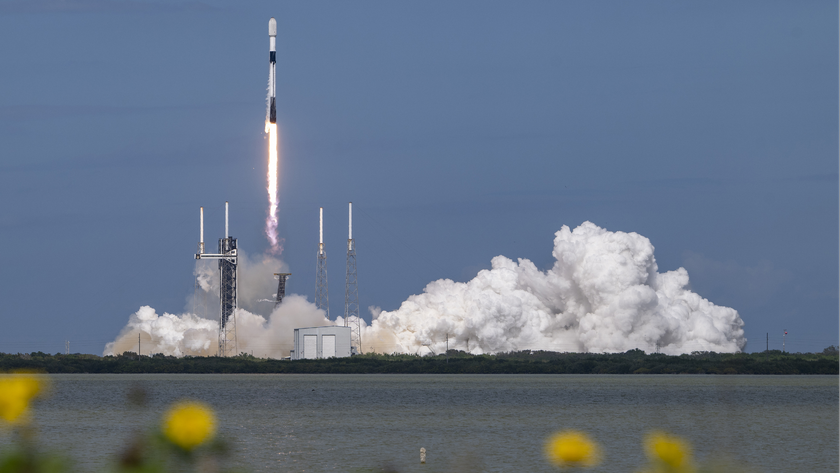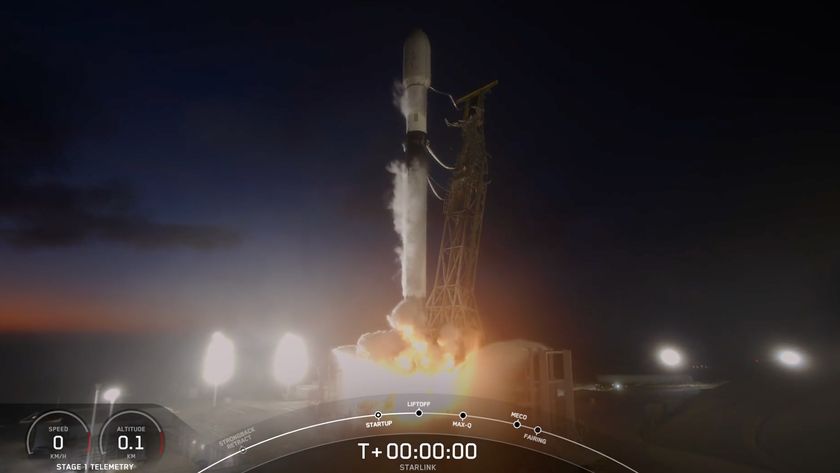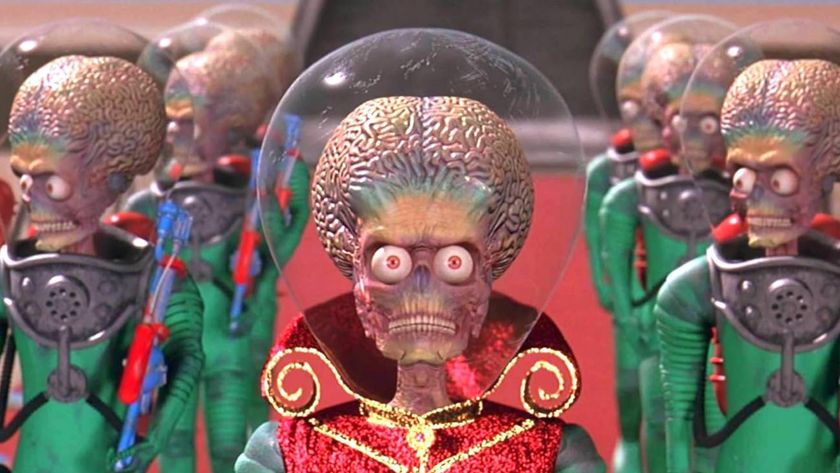10 Cool Facts About NASA's Space Shuttle Discovery
NASA's Shuttle Workhorse
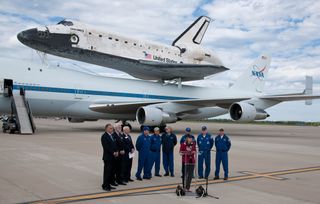
NASA's space shuttle Discovery took its last flight on April 17, 2012, riding on the back of a modified 747 jet from Kennedy Space Center in Florida to Washington, D.C., where it will go on display at the Smithsonian Institution's National Air and Space Museum.
Here are some interesting facts about Discovery, the leader of NASA's now-retired shuttle fleet:
FIRST FACT: Discovery's Storied Career
World's Most-Flown Space Shuttle

Discovery flew 39 space missions during its operational life, the first in 1984 and the last one in 2011. It notched more spaceflights than any other space shuttle, or any other spacecraft for that matter.
NEXT: A Year in Space
Discovery Spent Entire Year in Orbit
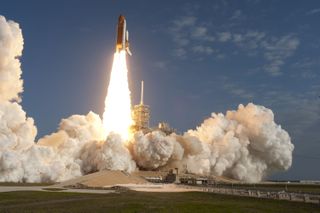
Over the course of its 39 missions, Discovery logged a total of 365 days in space. It also put 148,221,675 miles on its odometer, another space shuttle record. The miles traveled by Discovery could have carried it to the moon and back more than 300 times.
NEXT: Discovery Is Really Dirty
Discovery Is Really Dirty
![NASA/Ben Cooper [Full Story]](https://cdn.mos.cms.futurecdn.net/4jvX2YH2wUVJowDAv4af4c-320-80.jpg)
Discovery's somewhat dingy appearance surprises many people who see the venerable orbiter up close. The many marks on the shuttle are a testament to its long career and many spaceflights, NASA officials say.
"When you look at her up close, she does look worn," said NASA's Stephanie Stilson, who managed Discovery's processing flow between the orbiter's missions from 2000 to 2011. "There are discolorations and streaks from going from orbit back into our environment here."
NEXT: Put Hubble Space Telescope in Orbit
Discovery Launched the Hubble Space Telescope
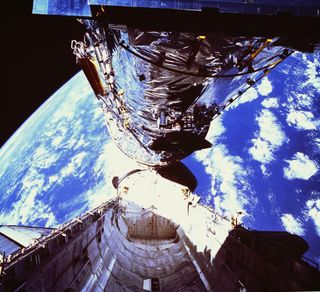
Astronauts aboard Discovery deployed NASA's Hubble Space Telescope on the shuttle's STS-31 mission in April 1990. Twenty-two years — and numerous repair missions — later, the instrument continues to snap stunning photos that help reshape our understanding of the cosmos.
NEXT: Discovery Returned NASA From Shuttle Tragedies
Discovery Returned NASA From Shuttle Tragedies
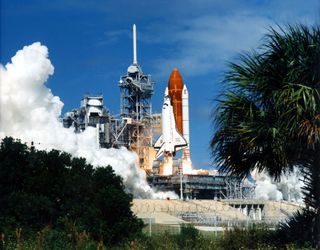
Discovery was the first shuttle to launch after each of the shuttle program's tragedies, the January 1986 explosion of Challenger and the Feburary 2003 destruction of Columbia as it re-entered Earth's atmosphere. Each disaster took the lives of all seven astronauts aboard.In both cases, the shuttle program took several years to get back on its feet. Discovery's return-to-flight missions launched in September 1988 and July 2005, respectively.
NEXT: Launched John Glenn Back Into Orbit
Discovery Launched John Glenn Back Into Orbit
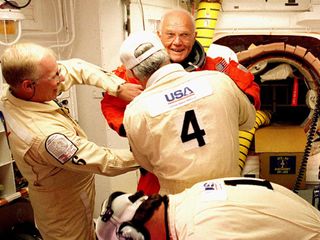
Discovery is the only shuttle ever to fly one of the Mercury Seven — NASA's first astronaut class, which was chosen in 1959. The orbiter carried John Glenn on its STS-95 mission in October 1998, when the astronaut was 77. Glenn thus became the oldest person ever to reach space; 36 years earlier, in 1962, he had become the first American to orbit Earth.
NEXT: Took Four Years to Build
Discovery Took Four Years to Build
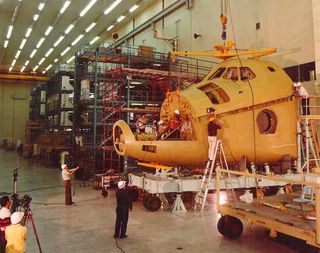
Work began on Discovery in 1979, and the shuttle wasn't completed until October 1983 in Palmdale, Calif. It was then flown aboard a 747 carrier aircraft to NASA's Kennedy Space Center, where it launched on its maiden mission in August 1984.
NEXT: Discovery's Female Astronaut Firsts
Launched 1st Female Shuttle Pilot & Commander
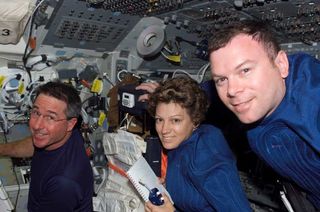
Discovery was the first American spacecraft to be piloted by a woman. NASA astronaut Eileen Collins piloted the shuttle's STS-63 mission in 1995, which rendezvoused with Russia's Mir space station. (Collins became the first female shuttle commander in history on Columbia's STS-93 mission in 1999, which deployed NASA's Chandra X-ray Observatory.)
NEXT: Took a Cosmonaut for a Ride
Launched 1st Russian to Ride a U.S. Spaceship
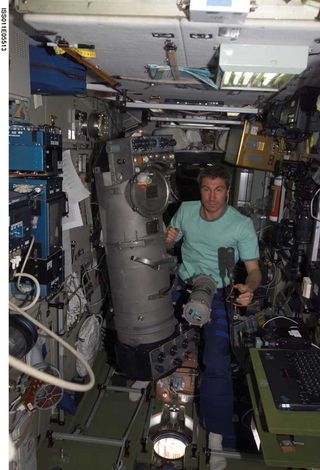
Discovery also carried the first Russian cosmonaut ever to launch in an American spacecraft. Sergei Krikalev flew aboard the orbiter on its STS-60 mission in 1994, the first effort in the joint U.S./Russian Shuttle-Mir program.
NEXT: The Legacy of Discovery's Name
Discovery's Name Has Long Exploration Legacy
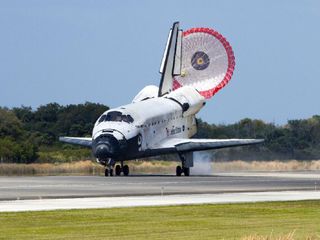
NASA's space-flown orbiters were all named after historic oceangoing research or exploration vessels. Discovery takes its name from two ships that loom large in the history of exploration. One was sailed by Henry Hudson in 1610-11 to search for a northwest passage between the Atlantic and Pacific Oceans, and the other was helmed by James Cook on an 18th-century voyage during which he discovered the Hawaiian Islands.
Join our Space Forums to keep talking space on the latest missions, night sky and more! And if you have a news tip, correction or comment, let us know at: community@space.com.
Get the Space.com Newsletter
Breaking space news, the latest updates on rocket launches, skywatching events and more!

Michael Wall is a Senior Space Writer with Space.com and joined the team in 2010. He primarily covers exoplanets, spaceflight and military space, but has been known to dabble in the space art beat. His book about the search for alien life, "Out There," was published on Nov. 13, 2018. Before becoming a science writer, Michael worked as a herpetologist and wildlife biologist. He has a Ph.D. in evolutionary biology from the University of Sydney, Australia, a bachelor's degree from the University of Arizona, and a graduate certificate in science writing from the University of California, Santa Cruz. To find out what his latest project is, you can follow Michael on Twitter.
